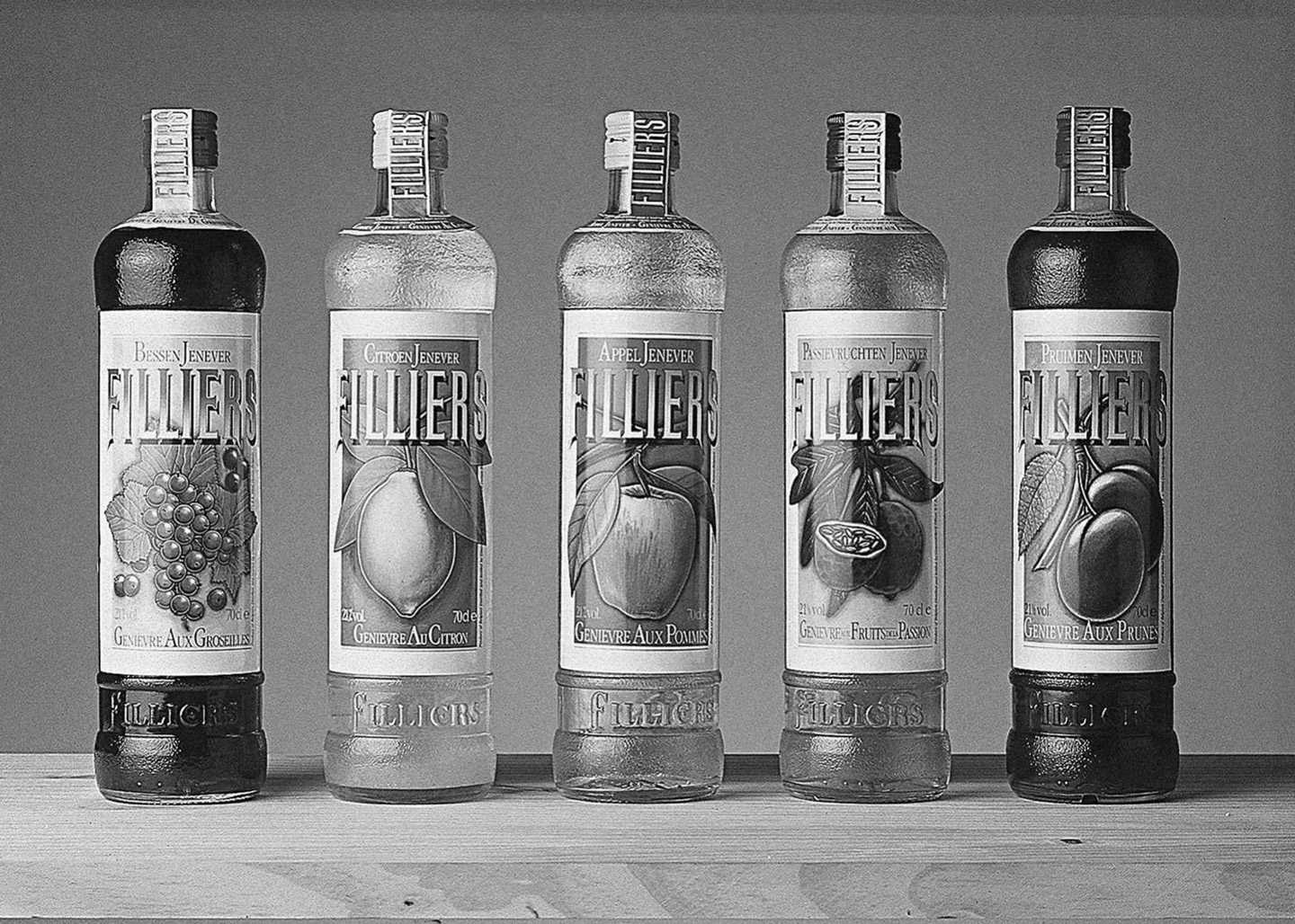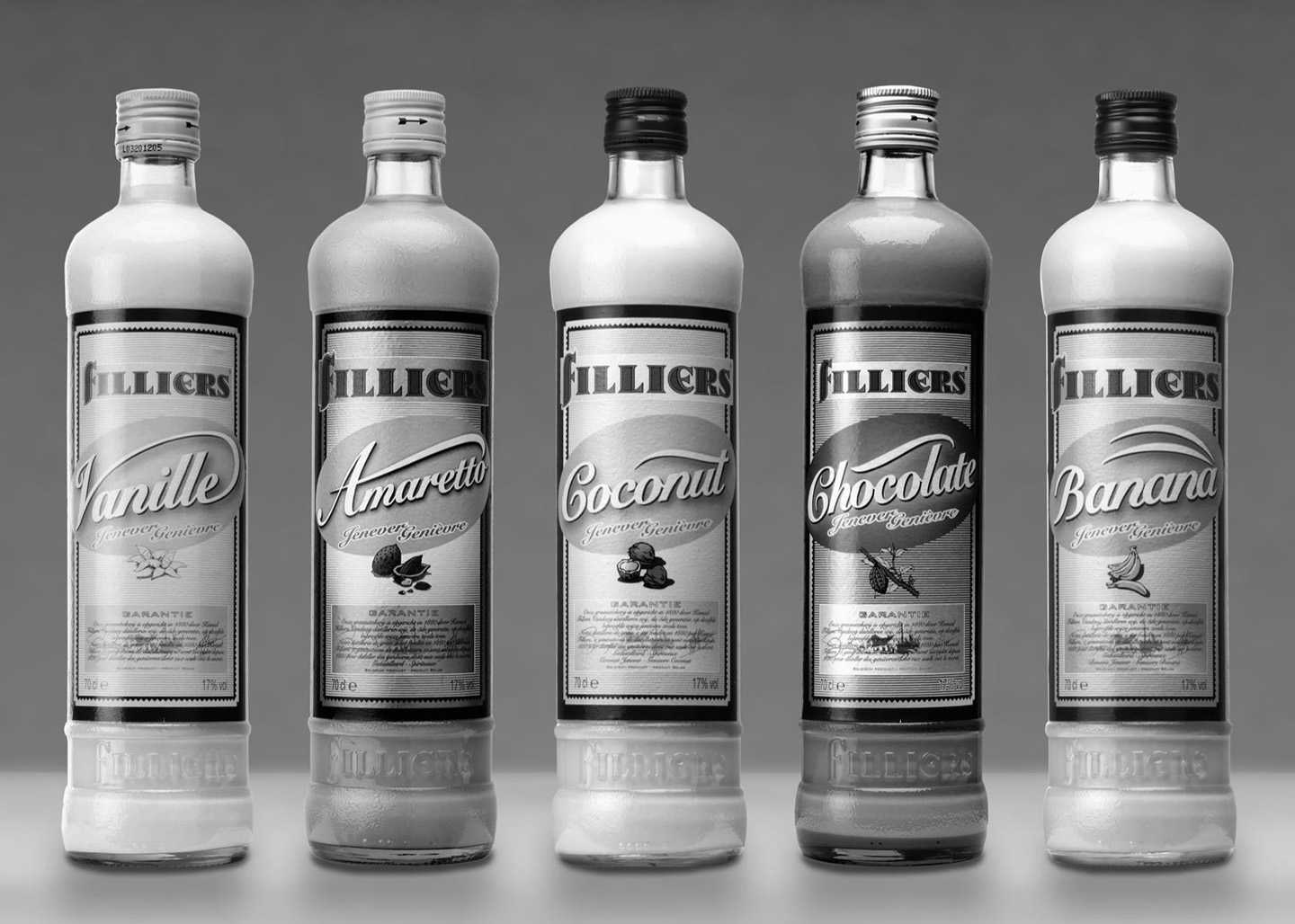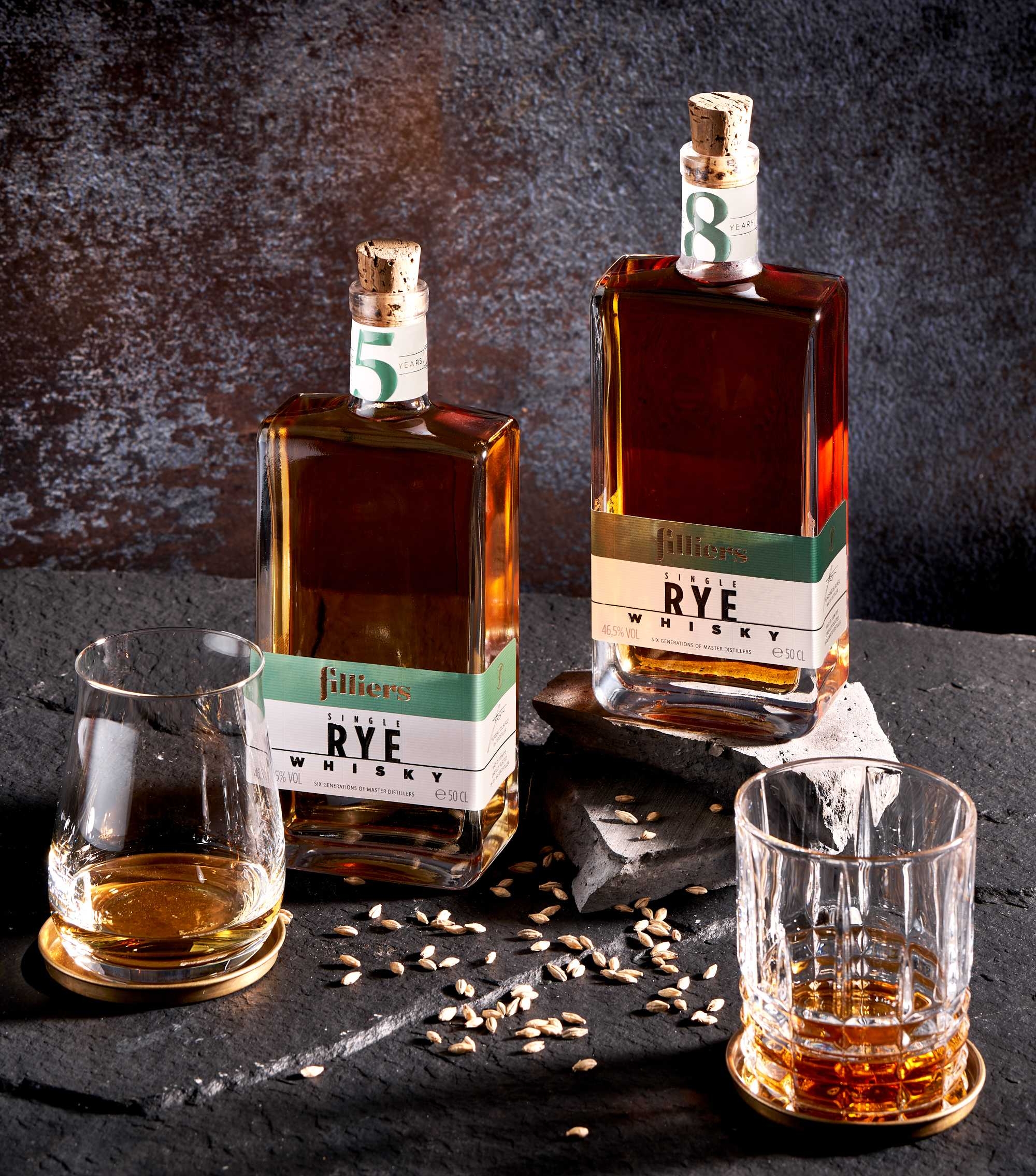1869 — Karel Lodewijk Filliers creates the legend

It all started when Karel Lodewijk Filliers bought some land to start his company. Although the focus at that time was on agriculture, the foundation was already laid for the first grain genever.
Today, it is still in that same place that Filliers Distillery distills distillates and creates products that are internationally known & appreciated.
1880 — First professionalisation under the second generation
Kamiel Filliers installed a steam engine to accelerate the distillation process. That was a significant investment that allowed the company to professionalise and grow further. During this period, Filliers Distillery also received its distilling license.
1900’s — From grain to glass
In the early 1900’s, grain genever was one of the most popular drinks of all time. At that time, Belgium had more than a thousand warm distilleries, of which Filliers Distillery was one. It is a stark contrast to the handful of warm distilleries that Belgium still has today.
During this period, Filliers Distillery was unmistakably an agricultural distillery where the surpluses of grain in the winter were distilled into grain genever. After constantly refining its genever recipe, Filliers Distillery also started selling to local inns in what was then Bachte.
The genever recipe is still a family recipe that is passed on from generation to generation.
1928 — The first Belgian gin
Firmin Filliers proved to be a visionary entrepreneur in the period after WWI. In 1928 he developed the very first Belgian gin recipe. This recipe still forms the basis of the current premium Filliers Dry Gin 28 today. Moreover, he also laid the foundation for the current look & feel of the Filliers brand in that same period.
Correspondence used to be sealed by the seal ring Firmin Filliers wore, in which the double letters “FF” were embedded. In the current branding, a renewed “F-logo” provides a distinguished & recognisable element of the brand, and is seen as a quality label for all packaging.
1945 — Restart after the World Wars

Due to the two World Wars, many distilleries got into difficulty and the distillery landscape was thinned out significantly. Many breweries & distilleries no longer had copper stills because they were claimed by the military to make ammunition.
Filliers Distillery hid the still by throwing it into a side branch of the river Lys. When the war was over, they pulled the copper stills out of the water in order to start producing again.
1960’s — A new generation, a new wind
Where agricultural continued to play an important role, the brothers Carlos and Louis Filliers increasingly moved the company in the direction of grain genever. After a while the agricultural branch was phased out. Filliers Distillery however was still an agricultural distillery at that time.
The distillery made a difference as a company by doing contract work and plowing the land for other farmers. This allowed the company to build a resilience that set it apart from other distilleries. It became possible to invest again and grow.
1967 — The start of aging in barrels
During this period experiments with barrel aging were conducted for the first time. That came after Filliers stopped importing Bordeaux wines because the passion for aging had become irriversibly great. This inspired the brothers towards the creation of wood-aged jenevers. Today, there are still a couple of barrels with aged jenevers left, dating back to this time …
1970 — Farm-fresh advocaat
With an origin in agriculture, Filliers Distillery owes a delicious & tasty recipe to Julia Denecker, wife of Firmin Filliers (3rd generation). The chickens, which were still a nod to the agricultural origin of the company, provided an abundance of eggs. These were the inspiration for Julia Denecker for a delicious egg liqueur/advocaat recipe. In 1970 Filliers Distillery based on this recipe brought her first advocaat to the market.
1980’s — Fifth generation brings innovation
Further professionalisation is being carried out with the rise of the next generation. Cousins Bernard and Jan join the family business that is getting bigger all the time. In addition to an increase in efficiency, they also expand the range with fruit genevers.
1986 — The first fruit genevers
Filliers Distillery has been developing her business since the 19th century so it had gathered an enormous wealth of product knowledge, formulations and market insight. For example, the fifth generation understood that the market was wider than their loyal or occasional consumers.
Jan Filliers was very committed to product innovation and was thus able to create a new segment with the launch of the Filliers fruit genevers. These mild genevers were accessible to a wide audience thanks to the addition of fresh fruit juice and its overall refreshing character.

1998 — Cream liqueurs
After the fruit genevers, the Filliers Cream genevers followed in the late nineties. This innovative introduction opened up a new market segment by developing a genever with a cream base. The varieties range from chocolate, vanilla, coconut to banana. All flavours with a rich character that are delicious in this liqueur range.

2006 — Takeover of Van Hoorebeke
In 2006, Filliers Distillery acquired the oldest distillery in Belgium that brought the first Belgian grain genever & vodka onto the market. Van Hoorebeke was founded in 1740 and has recipes that are more than three centuries old. The sensitivity to such a valuable legacy that is present at Filliers ensured that it strengthened its own portfolio and further strengthens its presence in the market.
2007 — The first Belgian whisky

After years of patience & refined professional knowledge, Filliers Distillery is able to write another piece of history. Filliers puts Belgium on the map again with the launch of the first Belgian whisky “Goldlys”.
Goldlys is a double distilled whisky matured in oak Bourbon barrels made from American oak. The name comes from the flax that was soaking in the Lys river before yarn was made from it. One referred to the “golden river” in those periods. In French and English, the river is called Lys, add the golden glimmer, and that is how the name Goldlys was born.
2008 — Farewell to Jan Filliers

At the end of October 2008, everything stopped in the distillery. Jan Filliers, master distiller, co-owner and manager was involved in a serious bus accident abroad in which he passed away.
This shock obviously caused a lot of sadness & helplessness. As a mark of respect, the Jan Filliers Fund was set up in 2009, a foundation which deliberately aims to support young road victims.
2009 — Takeover of Wortegemsen

This genever was the first fruit jenever and was traditionally made by housewives in the region of Wortegem-Petegem. The success of this tradition became so great that it was decided to commercialise this lemon genever.
With an extensive range and newly tapped market segments, Filliers Distillery saw an opportunity in 2009 to acquire Wortegemsen. The fresh citrus pulp is still added according to the authentic recipe and brings this spirit to a unique level.
2012 — Filliers Dry Gin 28

The basic recipe had already been created in 1928 by Firmin Filliers, who thereby launched the first Belgian gin recipe. After years of further development, the fifth generation launched the Filliers Dry Gin 28 in 2012.
Five generations of craftsmanship and tradition bottled in a unique pharmacy bottle. Incidentally, that pharmacy bottle was a particularly innovative solution to still be able to offer consumers gin in a glass bottle, while standard glass bottles were particularly expensive. The number 28 refers to the year 1928, and to the number of herbs & fruits used in the secret combination.
2014 — New maturation room
Thanks to its accumulated knowledge & know-how since the 1960’s, Filliers Distillery became a leader in barrel ageing. Not only is the demand getting bigger and bigger, Filliers Distillery also wants to respond to the maturation of spirits with an emphasis on Single Malt Whisky.
With the construction of the new maturation room, the family distillery has one of the largest ripening capacities in Belgium, the Netherlands & Luxembourg.2016 — Launch of Sunken Still

Especially popular in the United States, and less known but no less popular with us, is whisky with rye as a basis. In 2016, Filliers Distillery launched the first Belgian “rye Whisky” under the Sunken Still brand.
The brand name is a reference to a local legend. In an attempt to hide the precious copper stills from the German occupier, the workers of Filliers Distillery threw the stills into the Rekkelinge – a side branch of the Lys river. Nevertheless, the Germans found these stills, which forced the family to reinvest in new stills after the second World War.
Due to the rye, this whisky falls into the heavy whisky category, with a full body and robust characteristics. With this, Filliers Distillery once again charmed a new segment of consumers.
2018 — Launch of Filliers Barrel Aged Genever
Thanks to the efforts and vision of the fourth and fifth generations, Filliers Distillery has been able to take genever perfection to a new level. In turn, this is followed by the launch of the Filliers Barrel Aged range, a completely new type of genever in the world of spirits.
Genever is deliberately written with a “G” to emphasise the degree of innovation of this range. The Barrel Aged range varies from a fresh young pure genever, which lends itself perfectly for cocktails, to a complex 21 year old, unsurpassed as a pure sipper. Partly because of an ecological consideration, the traditional stone jug exchanged place for a recyclable contemporary glass bottle

2018 — Expansion: three distilleries on one site

A new investment followed in the expansion of the family business, allowing the distillery to grow & expand again. The design and installation of two extraordinary copper pot stills meant that Filliers Distillery now unites three distilleries on one site.
Thanks to the installation of two new whiskey stills, the family business was able to further professionalise and greatly expand the capacity of Single Malt Whisky.
2019 — Launch of Belgian Single Malt Whisky
A new investment followed in the expansion of the family business, allowing the distillery to grow & expand again. The design and installation of two extraordinary copper pot stills meant that Filliers Distillery now unites three distilleries on one site.
As a result, a next step could be taken within the family business and the production of the Single Malt Whisky at Filliers was definitively installed and greatly scaled up.

2020 — Naturales

At the beginning of 2020, the Corona crisis began when the COVID-19 virus made its advance at a terrifying pace. Since there was an acute shortage of hand gels, Filliers Distillery jumped into the breach for the healthcare sector and started producing disinfectant hand gels, under the Naturales brand name.
2023 — Filliers Rye Whisky

2023 — Filliers Distillery Welcomes Benoit Filliers as the 6th Generation





























